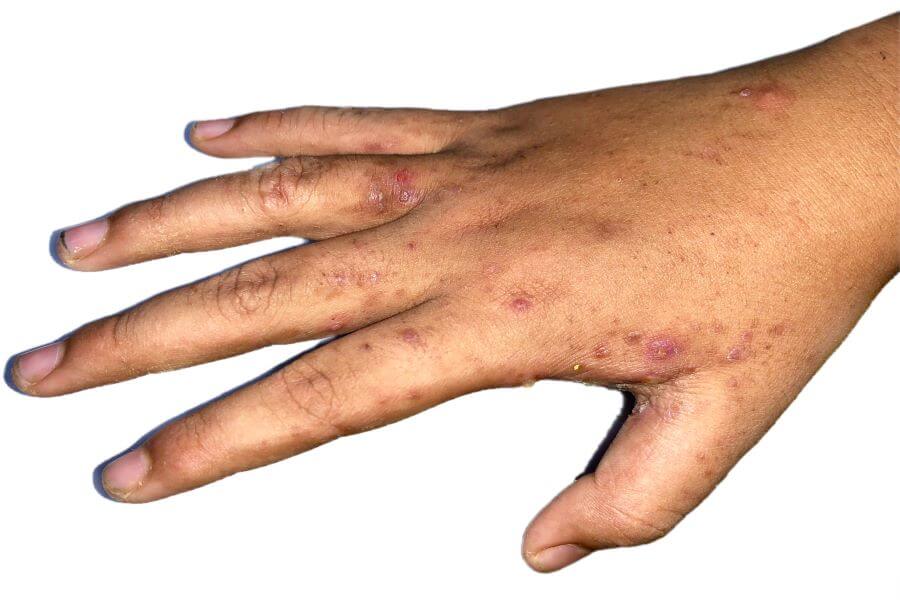What is Scabies?


Scabies is a skin infection caused by tiny mites known as Sarcoptes scabies. They burrow under the top layer of the skin, causing a very itchy rash. In addition to infecting children, scabies can affect people of all ages.
After infection with scabies mites, a rash typically appears within 2-4 weeks, as the skin reacts to the presence of the mites and their eggs. If your child has previously had scabies, the rash can develop within 1-4 days of repeated exposure to the mites. The development of fluid-filled blisters or sores and intense itching at night are the most prominent symptoms of scabies. In some cases, tiny burrows can be seen on the skin.
In infants and young children, the rash is usually more scattered and typically forms on the soles of the feet, palms, neck, and head. For older children, the rash develops on the thighs, stomach, genitals, and buttocks, in addition to between the fingers or within the creases of the wrist and elbow.
Scabies is extremely contagious and is spread by prolonged, close contact with an infected person. If someone in your family has scabies, it is highly likely that others will also become infected. The condition can also spread in families by sharing personal belongings, bedsheets, or towels.
Your child\’s pediatrician will examine the rash and ask questions about the intensity of the itching. Since children are more likely to repeatedly scratch the rash, the scratch marks and crusting of the sores make a diagnosis of the infection difficult. For this reason, the pediatrician may consider taking a skin sample to examine under a microscope for the presence of mites or eggs.
After a diagnosis of scabies has been confirmed, your child\’s pediatrician will prescribe medication. This will likely be a permethrin 5 percent cream, which should be applied over the entire body surface from the neck down to the feet and toes. For infants and young children, the cream should also be applied to the neck, head, and scalp. The cream should be washed off after eight to 14 hours. A repeat application may be needed one week later based on the recommendations of your pediatrician.
It is important to note that itching may still persist for several weeks after successful treatment. This itching does not mean your child is still infected. To soothe intense itching, your pediatrician may also prescribe a topical corticosteroid or oral antihistamine. If the rash is still present after four weeks, consult your pediatrician, as retreatment may be needed.
Sources:
- American Academy of Pediatrics
- Scabies.
American Academy of Pediatrics - Scabies Treatment.
Centers for Disease Control and Prevention - Scabies.
Powered by Bundoo®













































